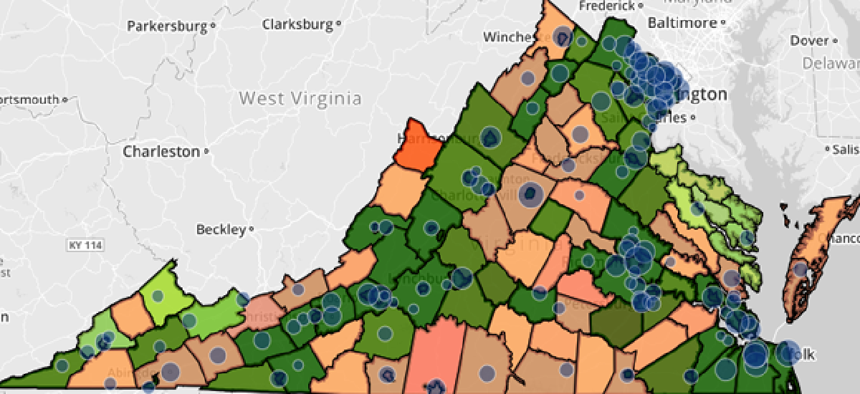FCC maps intersection of broadband and health in Virginia


Connecting state and local government leaders
Besides population and download speeds, the maps show the number of primary care providers per county, online access to health information, obesity prevalence and broadband provider distribution.
The first state map visually demonstrating the connection between broadband access, technology and health is up on the Federal Communication Commission’s website.
The Connect2HealthFCC map of Virginia is a result of an FCC task force formed last March to consider ways to accelerate the adoption of health care technologies by leveraging broadband and other next-generation communications services.
The FCC envisions that future healthcare systems will use broadband-based tools that will allow clinicians, social services providers and pharmacies to collaboratively help reduce disease and optimize health outcomes – all in an interconnected health care ecosystem.
For this first map, the FCC task force collected broadband-based health and technology metrics in Virginia to identify current trends, issues and potential gaps. Besides population and download speeds, those metrics include the number of primary care providers per county, online access to health information, obesity prevalence and broadband provider distribution.
Some of the task force’s preliminary findings:
Connectivity
- Approximately 20 of Virginia’s 95 counties (21 percent) have common download speeds of less than 9 Mbps. Lower download speed areas are not confined to rural areas.
- Only one Virginia county (Highland) has download speeds of less than 6 Mbps, which may suggest that there are some unique challenges that are keeping it from achieving connectivity levels available in other parts of Virginia.
People and providers
- There are large areas within Virginia with relatively few medical providers despite significant numbers of people.
- Some 600,000 Virginians live in counties with provider availability below the national average of 2,170:1.
- Virginia’s largest county, Pittsylvania County, has a primary care provider ratio of 21,000:1 and connectivity speeds of less than 25 Mbps.
Information
- Relatively little searching for online health information about chronic disease is occurring in counties with download speeds between 10 Mbps and 25 Mbps.
- Even counties with broadband download speeds in excess of 25 Mbps show evidence of relatively little online health searching. Many of these counties are found in south-central and southern Virginia.
- Counties with lower obesity prevalence also tend to have more online chronic disease searching occurring.
The Phase 1 maps of Virginia summarize ongoing observations and preliminary insights in an effort to improve the research methodology for future maps. Comments can be submitted to engageC2H@fcc.gov.
DataCardinal speed testing
In related broadband news, a new speed-testing app was developed to help Virginia localities in improving broadband access and utilization.
Built by the Center for Geospatial Information Technology (CGIT) at Virginia Tech and the Center for Innovative Technology, the DataCardinal speed testing tool tests both upload and download speeds. Voice quality over IP technologies is evaluated by measuring message delay (latency), and message delay variation (jitter). Results are uploaded to a public repository at CGIT to so users can compare their results with other areas in Virginia.
The app also features a provider lookup tool in which users can also find broadband providers at a point on a map. CGIT is currently developing a desktop version of the tool that will be released in the near future.
The free Android app tool is available in the Google Play Store. It also includes several survey questions designed to solicit better understand end-users' access and demand for mobile broadband services across Virginia.

NEXT STORY: Route Fifty City-County Roadtrip Recap: In Greene County, the Legacy of Energy Runs Deep




